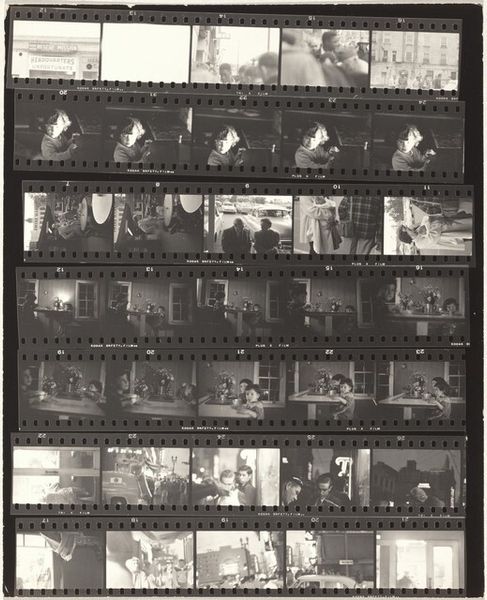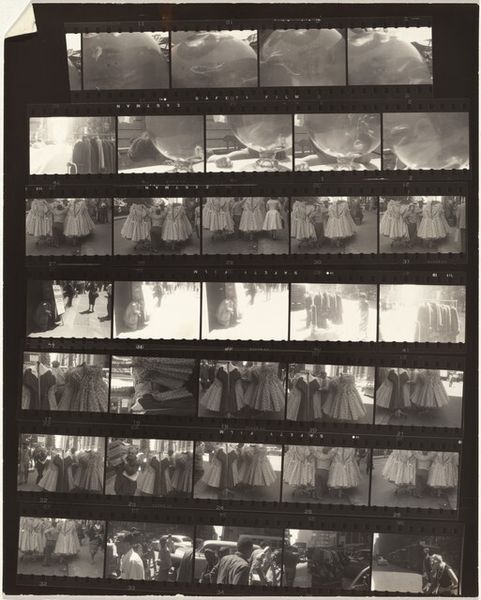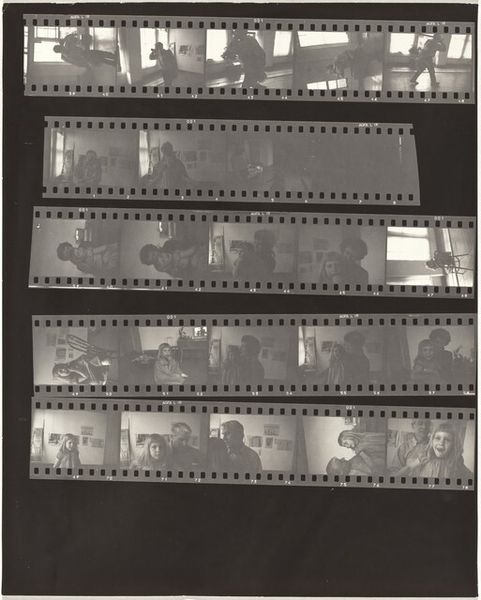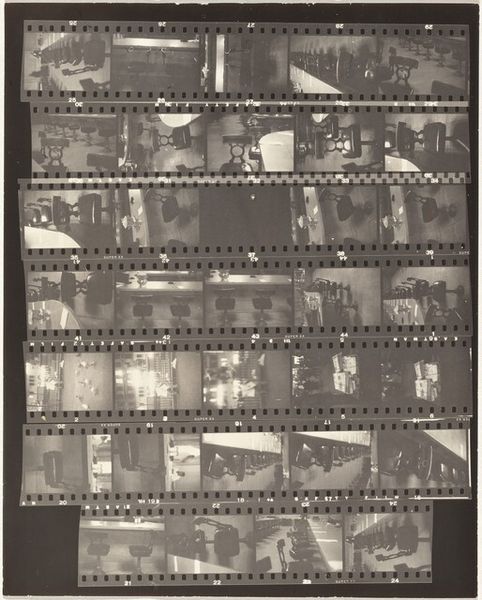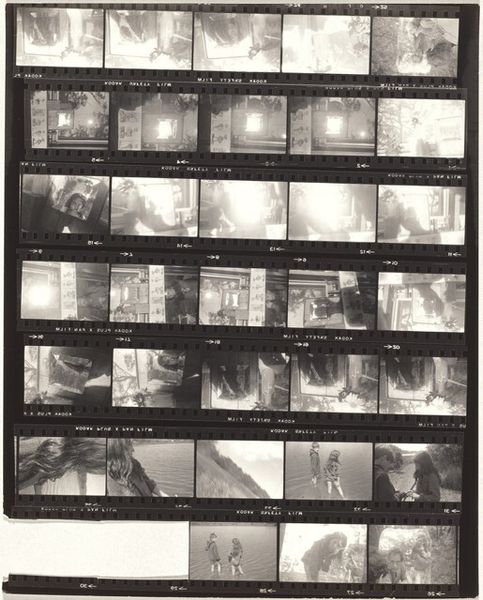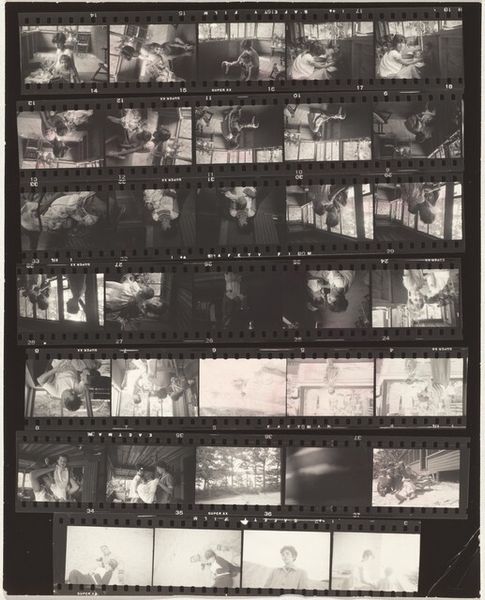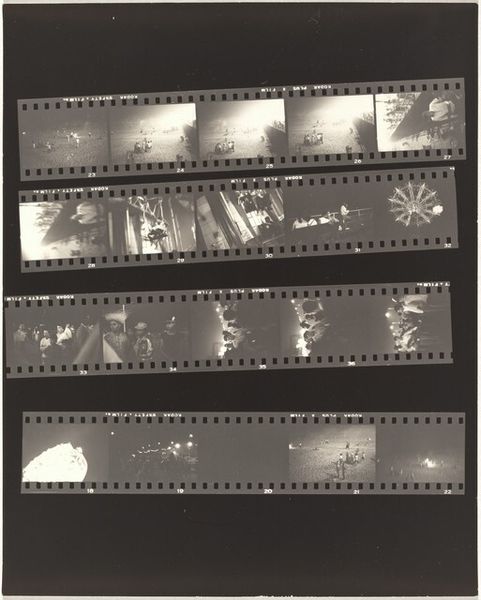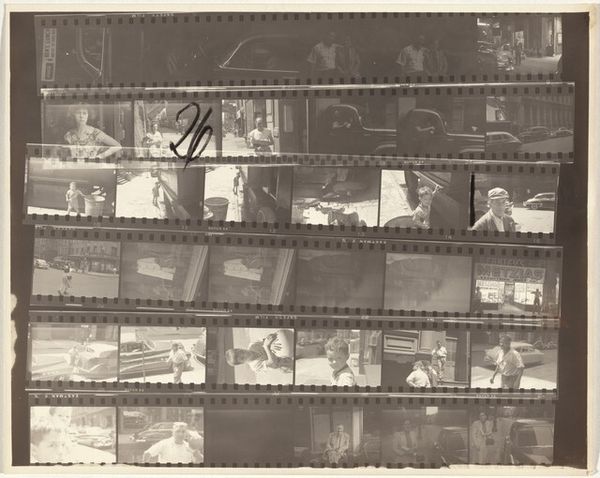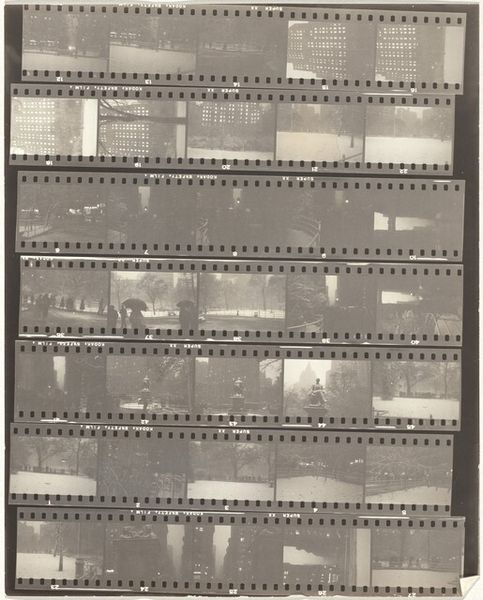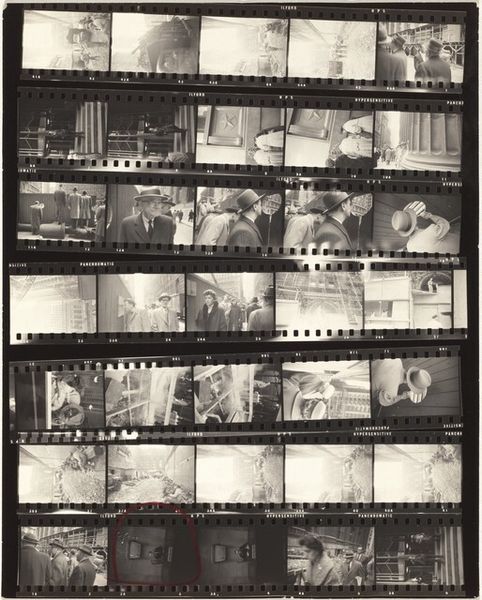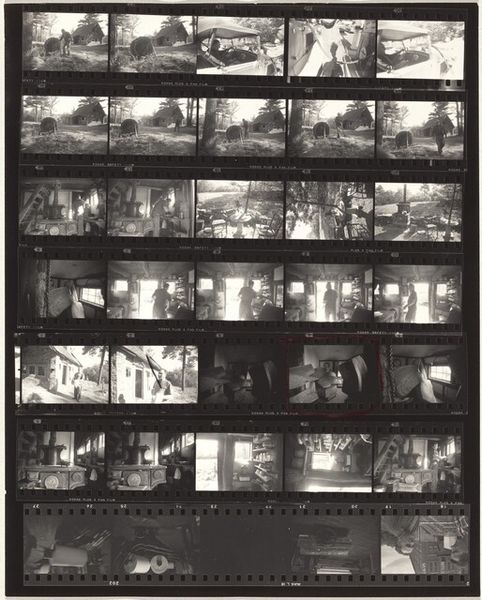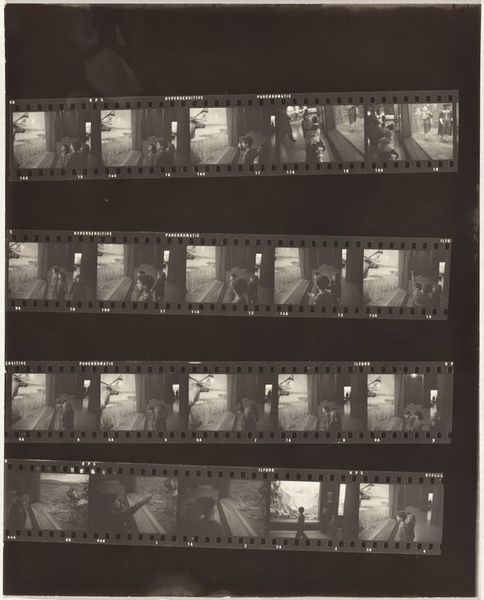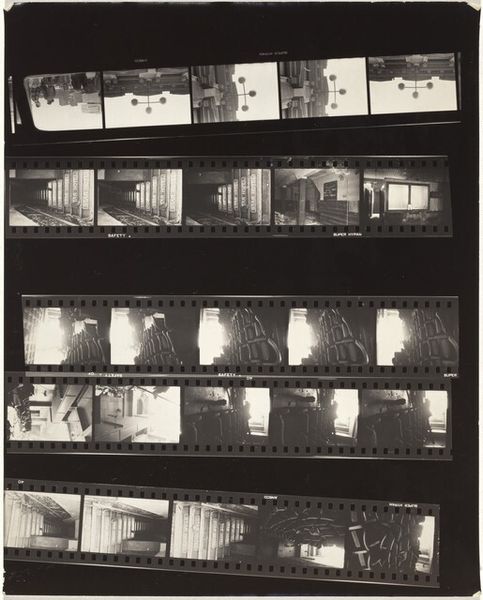
Dimensions: overall: 20.2 x 25.2 cm (7 15/16 x 9 15/16 in.)
Copyright: National Gallery of Art: CC0 1.0
Curator: Looking at "Paris 8" by Robert Frank from 1959, a gelatin silver print, what strikes you? Editor: The gritty, almost raw quality of the print. The contrast is stark, the texture grainy. It feels…immediate. I imagine it mirrors something of the experience on those streets. Curator: It does offer a unique glimpse into Frank's experience. This is actually a contact sheet, and the different snippets provide us with insights not only into Paris itself but also into the material constraints and circumstances surrounding its production. Consider the arrangement: the rows of images—a sequence focused largely on the Eiffel Tower, interspersed with some interiors, and the street, really lays bare his thought process. How do we interpret it? Editor: I immediately look at the Dupont Safety film strip label on the side, it grounds it in a reality of mass-produced materials. This is street photography in its purest form: recording and displaying the actual artifacts generated by the streets, complete with visible sprocket holes, fingerprints, and notes. How much labor and the conditions of photography does one perceive within the work? Curator: Precisely. And who inhabits the streets—in this moment, post-war Paris? The figure of the Eiffel Tower, appearing fragmented and reproduced along the sheet, looms above everything else, dominating like a ghostly colossus, especially alongside the scenes of more anonymous figures on public transport, in the streets. Editor: Almost as though Frank's material practice has revealed something about the social fabric. Curator: He held up a mirror to postwar American culture, which can also apply here in Paris; there is disillusionment and inequality simmering just beneath the surface, rendered visible via high-contrast black and white printing and sequencing that, quite literally, reveals something dark about the social surface itself. Editor: This raw aesthetic really underscores how Frank democratized image-making and photographic display, making it not a singular perfected representation but something more tactile and more indexical. Curator: Indeed. It forces us to ask who has the authority to represent Paris, and through what means? His work challenges us to confront these questions by using those very means. Editor: Seeing it this way has really brought into focus how photography, labor, and class are really working together here. Curator: For me, understanding the historical and social contexts of "Paris 8," brings new dimensions to the work of Robert Frank and photographic practice, too.
Comments
No comments
Be the first to comment and join the conversation on the ultimate creative platform.
